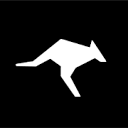The steps for correlation analysis of research data using DeepSieve are as follows:
- Data preparation: Converting experimental data to CSV/SQL format and organizing literature data into structured JSON
- Mode Selection: Graph RAG mode recommended for complex correlation analysis (export RAG_TYPE=graph)
- Parameter Configuration: query decomposition (-decompose) and routing (-use_routing) must be enabled
- Typical Query Example: "Does the function of gene X reported in the literature correlate with the expression level in experimental dataset Y?" This type of question is automatically split into two subtasks: literature search and data analysis
- Validation of results: Check the answer fusion logic for each sub-question with the results file in the outputs/graph_{dataset}/ directory
Note: It is recommended that you perform a small-scale test with the -sample_size 10 parameter first, and then process the full amount of data after adjusting the fusion strategy.
This answer comes from the articleDeepSieve: a RAG Intelligent Information Screening Tool for Processing Complex Query SourcesThe




















